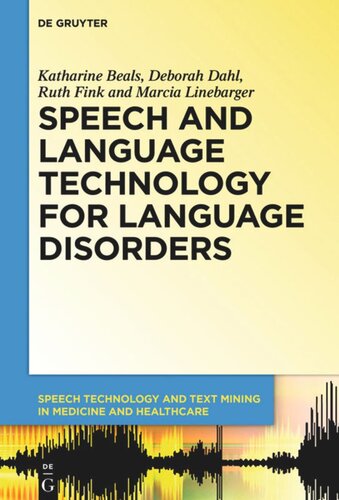

Most ebook files are in PDF format, so you can easily read them using various software such as Foxit Reader or directly on the Google Chrome browser.
Some ebook files are released by publishers in other formats such as .awz, .mobi, .epub, .fb2, etc. You may need to install specific software to read these formats on mobile/PC, such as Calibre.
Please read the tutorial at this link: https://ebookbell.com/faq
We offer FREE conversion to the popular formats you request; however, this may take some time. Therefore, right after payment, please email us, and we will try to provide the service as quickly as possible.
For some exceptional file formats or broken links (if any), please refrain from opening any disputes. Instead, email us first, and we will try to assist within a maximum of 6 hours.
EbookBell Team

4.8
104 reviewsThis book draws on the recent remarkable advances in speech and language processing: advances that have moved speech technology beyond basic applications such as medical dictation and telephone self-service to increasingly sophisticated and clinically significant applications aimed at complex speech and language disorders. The book provides an introduction to the basic elements of speech and natural language processing technology, and illustrates their clinical potential by reviewing speech technology software currently in use for disorders such as autism and aphasia. The discussion is informed by the authors' own experiences in developing and investigating speech technology applications for these populations. Topics include detailed examples of speech and language technologies in both remediative and assistive applications, overviews of a number of current applications, and a checklist of criteria for selecting the most appropriate applications for particular user needs.
This book will be of benefit to four audiences: application developers who are looking to apply these technologies; clinicians who are looking for software that may be of value to their clients; students of speech-language pathology and application development; and finally, people with speech and language disorders and their friends and family members.